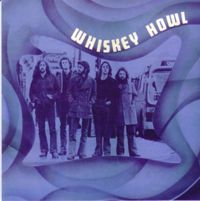By the end of the 1960s, the psychedelic-rock revolution was peaking. Dream-laced lyrics and trippy effects, including distortion, tape-loops, echoes, delays and phase shifting, were rampant. Adventurous musicians were busy employing a new array of instruments to conjure up kaleidoscopic sounds. The Beatles, leaders in the new music, had already introduced the sitar on Sgt. Pepper’s and the Mellotron on “Strawberry Fields Forever.” The year 1969 saw numerous bands tripping out with delightfully freaky albums, including Skip Spence’s Oar, Jefferson Airplane’s Volunteers and The Moody Blues’ On the Threshold of a Dream. During the winter of ’68, the members of Toronto’s Kensington Market were ...
Music journalism, books and more
The best songwriters are alchemists, wordsmiths whose magic transforms personal experiences into universal truths. For nearly 40 years, Murray McLauchlan has been performing lyrical sleights of hand, taking insights about himself and observations about the world around him and spinning them into songs that are both meaningful and memorable. His sensitive tales of growing up and growing old, his razor-sharp portraits of the downtown and the downtrodden and his wry depictions of love lost and love found are all gathered here. Taken as a whole, these 36 songs, including three previously unreleased tracks, represent a formidable body of work, one that places McLauchlan firmly in the forefront of Canada’s best songwriters.
In 1965, at the age of 17, McLauchlan left his suburban Toronto home and headed for the highway. With guitar in hand, he hitchhiked out to British Columbia, where he worked in sawmills, logging camps, picked fruit and rode freight trains. Upon his return several months later, McLauchlan said goodbye to his parents’ house for good. Instead of a farewell letter, he wrote “Child’s Song,” a coming-of-age number that perfectly captured the mixed emotions of leaving home. The moving ballad also launched his career when American folksinger Tom Rush covered both it and “Old Man’s Song,” McLauchlan’s stark ode to aging, on his critically acclaimed 1970 album.
Toronto’s Queen Street, the portion running west from stately University to cosmopolitan Spadina, was originally a jumble of greasy spoons, barbershops and clothing stores. Owners lived above their shops, while children played on sidewalks. There were even a couple of watering holes that supplied the mostly Irish, Jewish and Eastern European locals with cold, cheap draft beer. By the late 1970s, those bars had become part of a fertile breeding ground, a creative hothouse of forceful protest, stylish adventure and uninhibited experimentation that produced an explosion of musical talent. In many ways, it paralleled the city’s fabled Yorkville scene of the previous decade, with a tight concentration of clubs that served as a launching pad for a generation of future stars.
The catalyst for change was the nearby Ontario College of Art. Drawn by the lure of affordable housing and restaurants serving inexpensive meals, students from the college began moving into the area, rubbing shoulders with the district’s working-class denizens. Soon, artist-run galleries, theatres and other performance spaces sprang up, while music quickly took over the taverns and the illegal, after-hours clubs that surreptitiously opened
 Canadians have long had a love affair for the blues. In the 1970s, artists from Vancouver’s Powder Blues and Halifax’s Dutch Mason to Montreal’s Offenbach and Winnipeg’s Big Dave McLean thrilled audiences with their interpretations of the 12-bar form. The blues feeling has always been especially strong in Toronto, where a close proximity to Chicago and Detroit and regular appearances by major U.S. blues artists fostered a deep connection with the music. Three of Canada’s earliest and most successful blues groups hailed from Toronto and nearby Hamilton, including Downchild Blues Band, McKenna Mendelson Mainline and Crowbar with King Biscuit Boy. Into this blues-loving milieu came Whiskey Howl.
Canadians have long had a love affair for the blues. In the 1970s, artists from Vancouver’s Powder Blues and Halifax’s Dutch Mason to Montreal’s Offenbach and Winnipeg’s Big Dave McLean thrilled audiences with their interpretations of the 12-bar form. The blues feeling has always been especially strong in Toronto, where a close proximity to Chicago and Detroit and regular appearances by major U.S. blues artists fostered a deep connection with the music. Three of Canada’s earliest and most successful blues groups hailed from Toronto and nearby Hamilton, including Downchild Blues Band, McKenna Mendelson Mainline and Crowbar with King Biscuit Boy. Into this blues-loving milieu came Whiskey Howl.

